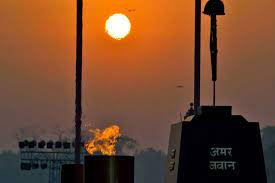Free Courses Sale ends Soon, Get It Now


Free Courses Sale ends Soon, Get It Now



Disclaimer: Copyright infringement not intended.
Context
The merger
Amar Jawan Jyoti
Key elements of Amar Jawan Jyoti
National War Memorial
Architecture
© 2024 iasgyan. All right reserved